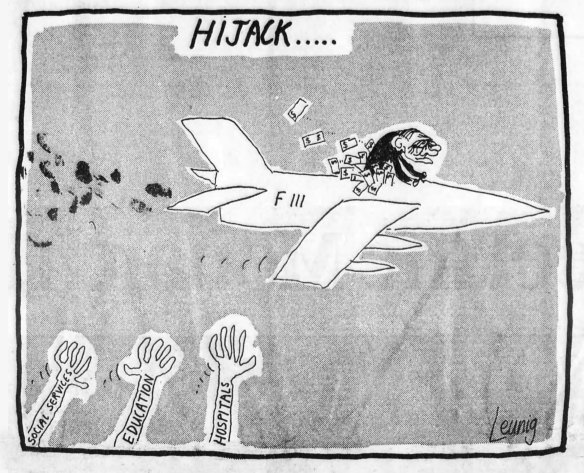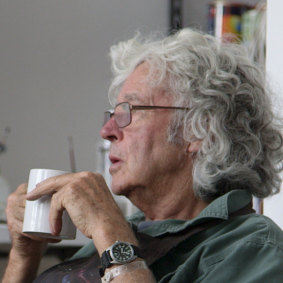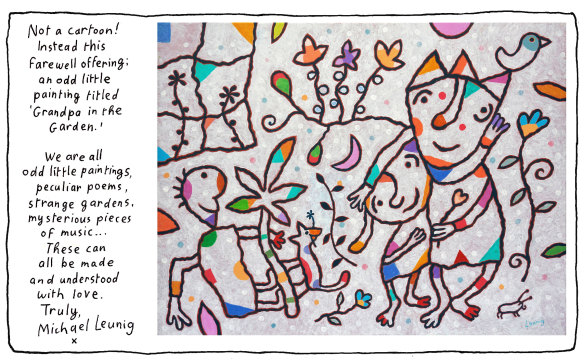A simple guide to time travel and a farewell from a household name
Opening an old newspaper is about as close as one can get to time travel.
Advertisements are the first things that convey the feeling of being transported to another time. There are promotions for remedial elixirs and miracle cures, ads encouraging people to “build with asbestos”, and cigarettes – lots of cigarettes.
The Age was first published during the gold rush, so when used as a time machine it has excellent range. We are lucky, here in the newsroom, to have excellent pilots of said machine: people like Andrew Brooks and Michelle Stillman, who work assiduously in our library to carefully collate and access our archives.
Their expeditions into the past invariably result in detours and discoveries that highlight how far we’ve come as an industry, as a publication and sometimes as individuals.
For example, take a look at this political cartoon from September 1969. It is the first known contribution to The Age by Michael Leunig. You’ve probably heard of him.

Leunig’s first cartoon from 1969.Credit:
“HIJACK”, drawn during an era of plane hijackings, pictures then prime minister and former RAAF pilot John Gorton flying an F-111 full of cash. At $7.45 million per plane, the Australian government’s controversial decision to buy 24 of the aircraft from the US was making headlines at the time.

Michael Leunig in the documentary The Leunig Fragments.Credit: Madman
While the use of wordplay in this cartoon signalled what would become a Leunig trademark, it bears little visual resemblance to his more recent works, which in the case of this week’s offering is “not a cartoon” at all.
Subscribers, you are the first to receive the news that almost 55 years after he filed “HIJACK” as a one-off contribution filling in for an ill Les Tanner, Michael Leunig has filed his last editorial illustration for The Age. Saturday’s Leunig, in its regular spot in The Age’s Spectrum section, is his farewell to readers.
As Spectrum editor Lindy Percival writes: “Through Leunig’s work, we have contemplated life’s beautiful and occasionally baffling moments: Mr Curly arriving home to his curly-headed family; a simple soul dreaming of floating coloured petals; and a father and son watching the sun set on TV, oblivious to the real thing happening outside their window. All the while, his angels have looked on – often in sorrow, sometimes in anger, but always with love.”
As a treat for the readers of this note, here is an early glimpse of Leunig’s farewell to his readers.

Michael Leunig’s final Spectrum cartoon.Credit:
At The Age today we will say goodbye to valued colleagues who are moving on to the next chapter of their careers. They include some excellent journalists whose names will be familiar to you through their bylines, their artwork, or through my praise of them in these missives. Others may be less visible to the public but have made immeasurable contributions to The Age via its homepage, in print and across the newsroom.
During some recent rummaging through old newspapers – call it time travel – it became clear to me that people (mostly retired journalists) who claim the halcyon days of newspapers are long gone are wrong. The skill and integrity of the journalists I work with at The Age hold up well against the giants of journalism in those pages from the past.
This publication improves every year, thanks largely to the commitment of those nearing the end of their careers to nurture the next generation. While the environment in which we operate continues to evolve and present new challenges, the quality of our journalism and our journalists’ commitment to do the best for our subscribers and the belief in the value of what they do endures.
I don’t need a time machine to tell me that The Age’s young generation of journalists will continue to make a contribution to this publication and society that is just as valuable as that of their accomplished predecessors.
Sign up here to receive Patrick Elligett’s Note from the Editor newsletter each week, exclusive to subscribers.